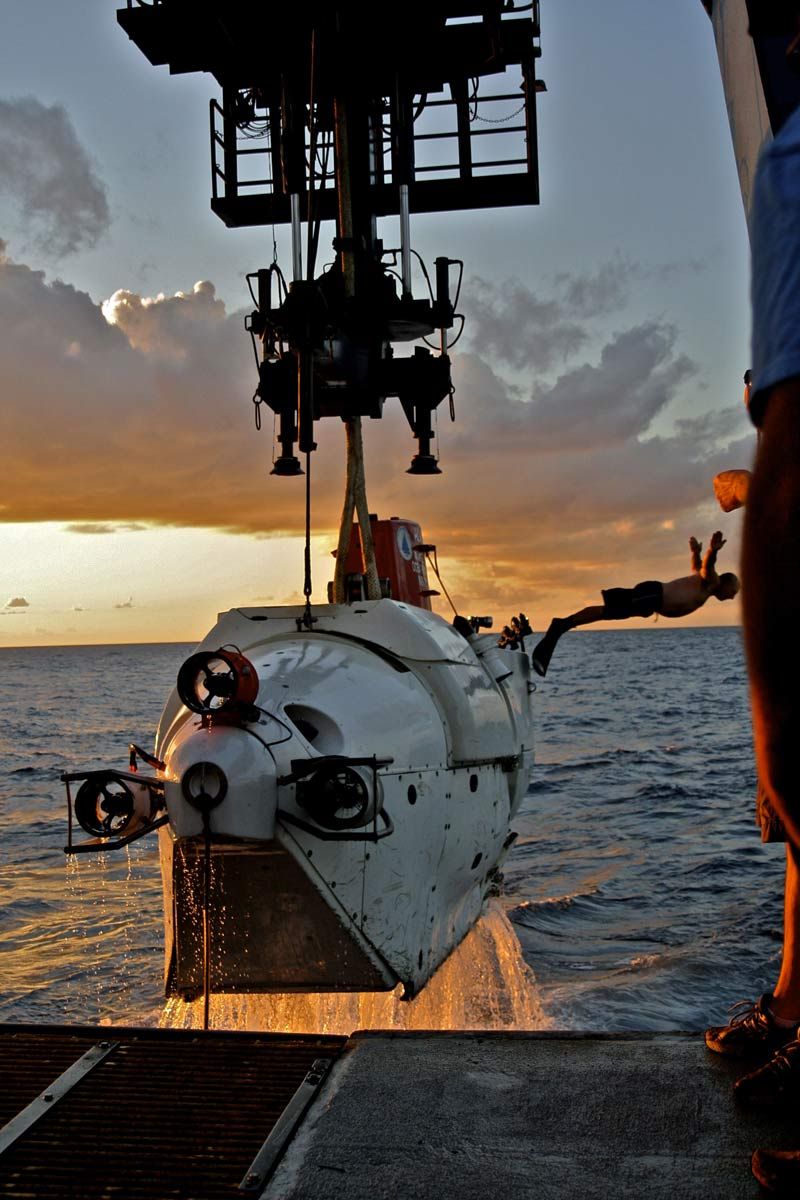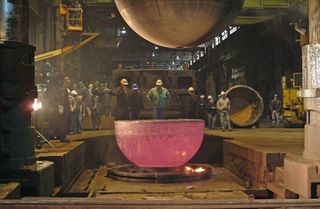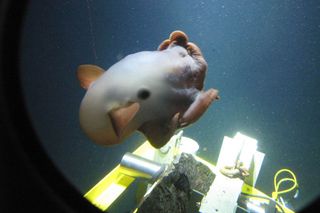
Deep-Sea Vehicle Alvin Gets Splashy Makeover

Humans have explored only a tiny fraction of the deep-sea floor, but the deep-diving submersible vehicle Alvin gets credit for a considerable share of what humanity has seen in the water's dark, alien depths.
Alvin, which can ferry three people into the deep sea, has made 4,664 dives since its first in 1965. Alvin has explored the wreckage of the doomed Titanic, revealed otherworldly life flourishing at hydrothermal vents and their cooler counterparts, cold seeps. Most recently, Alvin was dispatched to investigate the effects of the Deepwater Horizon oil spill in the Gulf of Mexico.
After all of these missions, Alvin is getting an upgrade.
A new sphere — the part of the submersible in which a pilot and two scientists travel — has been forged from titanium, and workers at the Woods Hole Oceanographic Institution (WHOI) in Massachusetts, Alvin's home base, have begun the process of rebuilding the rest of the storied submersible.

After ensuring the sphere fit within Alvin's frame, workers removed the sphere and are now bolting flotation material called syntactic foam, the main ballast system, the battery box and other systems onto the frame. The interior of the sphere still needs to be built and instrumentation installed within it, said Susan Humphris, the scientist leading the upgrade project. [See Photos of Alvin and Its Deep-Sea Adventures]
She said she expects Alvin to be reassembled by the end of the year. Manned testing is expected to begin by March with the first deep dive off Bermuda in April 2013.
A successful dive in April would complete the first half of the two-stage upgrade process intended to enable Alvin to dive deeper, carry more samples, extend the reach of its arms, take better pictures, and provide its passengers and pilot with a more comfortable ride and a better view, Humphris said.
Sign up for the Live Science daily newsletter now
Get the world’s most fascinating discoveries delivered straight to your inbox.
The first stage of the upgrade, which is under way, is estimated to cost $40.9 million. However, the timing of the second stage remains uncertain, pending funding and technological developments. Power is a big part of the problem.
The first-stage upgrades involve changes that don't require more power. For example, the new 6.5-foot-diameter (2 meters) sphere is slightly larger than its predecessor and has slightly larger portholes, or windows, in an improved configuration. Its interior will feature a curved bench on which occupants can lie or kneel, Humphris said.
But perhaps the most significant upgrade, extending the depth to which Alvin can dive from 15,000 feet (4,500 m) to 21,000 feet (6,500 m), isn't yet happening. The problem: Diving deeper requires more power.

Alvin has used lead-acid batteries, like those in a car, to power itself on dives. But to extend its depth range, Alvin needs a battery upgrade. The easiest choice for an improvement would be lithium-ion batteries, but this technology isn't yet safe enough to be used on a routine basis in a manned submarine.
"Our hope is that it could be done when the Alvin goes through its next major overhaul in five years," Humphris told LiveScience. Every five years, Alvin is completely disassembled for maintenance.
In its current configuration, Alvin's diving capability allows it to reach the bottom of about two-thirds of the ocean. At the extended rangeAlvin is expected to be able to reach 98 percent of the seafloor, Humphris said. [Gallery: Unique Life at Antarctic Deep-Sea Vents]
But even with its diving range extended, Alvin will be far from the deepest diving submersible. In March, James Cameron dove 6.8 miles (11,000 m) in the western Pacific in a privately funded vehicle. And in June, China tested its own submersible below 23,000 feet (7,000 m).
The new titanium sphere, forged in Wisconsin, is now at WHOI, where Alvin’s pilots have begun rebuilding the vehicle. (The pilots do assembly work so they are intimately familiar with the vehicle, Humphris said.)
The titanium frame into which the sphere will fit is not yet completed, but work is continuing using a steel mockup until the real thing is ready.
Humphris, a geologist, said she stopped counting her dives in Alvin after her 30th trip.
"The bottom of the ocean is close to freezing, so you take a lot of sweaters, coats and gloves and socks down with you," she said. The cooling has an uncomfortable repercussion: "the water vapor condenses out and it trickles down the inside of the hull, [so] you are leaning against the hull and there is this cold trickle of water going down your back."
The journey to the bottom of the ocean takes roughly two hours each way, leaving about five hours of a dive spent on the bottom.
"You have got limited time … We don't even stop and eat lunch once we are on the bottom, you just work, and you usually have a long list of tasks to accomplish so that is probably the most stressful time," she said.
Follow LiveScience on Twitter at @livescience. We're also on Facebook & Google+.












